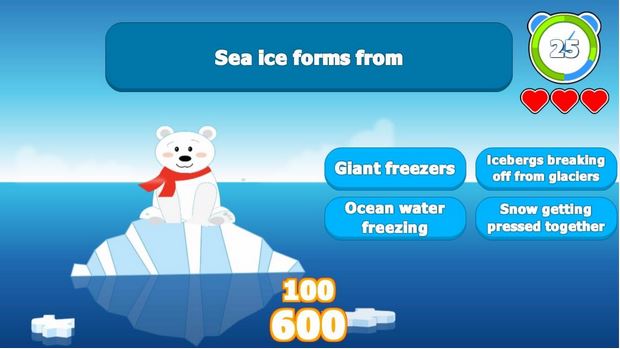22 February 2019
The art of video games
A new way of communicating a message that makes us more aware of risks threatening the planet
Video games for appreciating the planet
“Tree”, a virtual reality experience designed by two artists, Milica Zec and Winslow Turner Porter III, lets you have the unique experience of being transformed into a tree. Presented at the Sundance Film Festival, Tribeca, Cannes, and the Internazionale Festival in Italy, the few minutes which cover the lifespan of a tree turn into an experience that seems to last a century, with all its splendour: smells, giddiness, sounds, noises, the icy air of the wind that rustles through the branches - which are an extension of your own arms. Through the headsets and an extremely sophisticated software that functions through a machine that is placed on your shoulders, participants can have the exhilarating experience of understanding what it means to be part of the flora of a large forest. The work of Milica and Winslow is the second in a trilogy that effectively communicates, beyond just the life of a plant, how much danger we pose to it: by cutting it down, carving it, burning it. The participant does not arrive at this point, however, after emerging from the experience, he/she has a slightly better understanding of the planet, which truly remains in the head and heart.
Ecological video games
Virtual reality is making huge strides and is not just a way of playing that involves all our senses. It is obviously also a way of communicating. And it is not the only one. The forerunners of these new sensory experiences are the “old” video games, in which you move the ball or drive a car on the tracks of Monza or Dubai. But now people are studying both virtual reality and video games for delivering a message in order to make us more aware, even from the time we are children.
Professors and students in the EarthGames program at the University of Washington, for example, are working on a new way of interpreting video games in order to engage children and adults regarding the causes, impact and, of course, solutions to reduce the risks from climate change. The main characters can be animals, environments, or homes in which energy saving actions can be taken. “EcoTrivia: Save the Animals!”, for example, is a cartoon in which the animal characters provide short lessons on the climate. In another video game, the player can choose how to help scientists save the world from drought, rising water levels, and global warming. The game won first place in the National Climate Game Jam, an event whose sponsors include the White House.
Josh Lawler, founder of EarthGames and co-director of the Centre for Creative Conservation at the University of Washington, explains that the EarthGames’ motto is: “We can change the future through video games”. In an interview with Lisa Stiffler for GeekWire, a Technews & Business magazine, Lawler observed, “The challenge is to take a serious topic and make it really fun. There were already some video games linked to climate and maybe one or two were OK but the rest were miserable. We thought, someone has to be able to do better”. Said and done, two years ago the project launched with Lawler and Dargan Frierson, associate professor in the university’s Atmospheric Sciences Department, and a video gamer himself. Then other teachers and students were enlisted to create a team that produced the first games.
Ethical video games
Another similar initiative is the outcome of a partnership between the World Tourism Organization (UNWTO) and Niantic Inc., an American software development company based in San Francisco, which is famous for developing virtual reality games that can be played on mobile devices, such as Pokémon Go, Ingress Prime, or Harry Potter: Wizards Unite. Here there will be no witches, wizards or strange creatures, but environments and situations that aim to improve the quality of global tourism through the use of virtual reality gaming experiences. The campaign is called “Travel.Enjoy.Respect” and was designed by UNWTO in line with the concept for tourism contained in the 2030 United Nations agenda for sustainable development. By travelling virtually in an informed manner, perhaps we can do so also in our real journeys.

